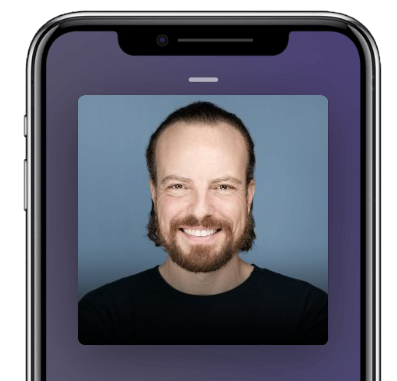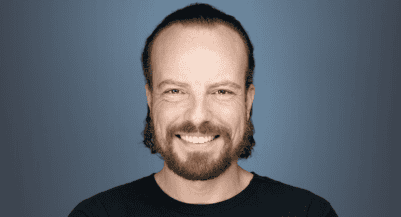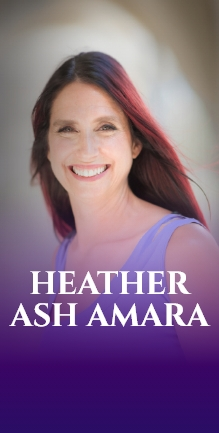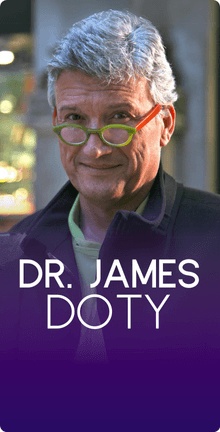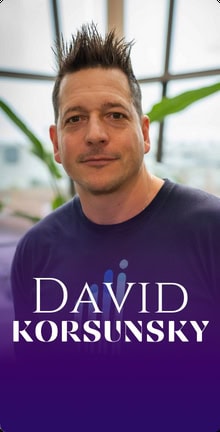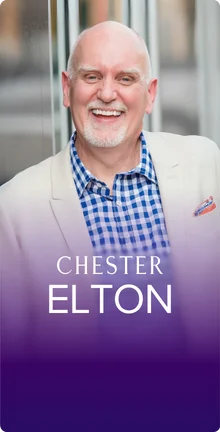In this Episode
- [02:06]Stephan welcomes Jason Earle and outlines his transition from Wall Street broker to mold expert and entrepreneur. Jason describes his early health struggles, including misdiagnoses, asthma, allergies, and his family’s challenging environment.
- [11:12]Jason reflects on how difficult experiences, such as near-death encounters, can be transformative and seen as blessings.
- [27:32]Jason recounts his experiences of being the youngest licensed stockbroker at age 17 and how disillusionment with the industry led him to mold inspection and remediation.
- [30:51]Jason explains his pivot to working with mold-sniffing dogs, the media attention, and the success of his company.
- [35:51]Jason discusses the five-year journey to creating an accessible mold test kit for families and its importance for indoor air quality.
- [43:07]Jason explores how mold, mycotoxins, and VOCs can impact health and mental well-being, along with stories of those affected.
- [51:11]Stephan and Jason talk about maintaining spiritual connection, conscious breathing, and the concept of life’s challenges serving as opportunities for spiritual growth.
- [54:39]Jason hints at a future project to address broader air quality issues and environmental exposure in a consumer-friendly way.
- [57:33]Jason offers special deals on test kits and a 46-page e-book, along with details on how to contact him and join his newsletter.
Jason, it’s so great to have you on the show.
It’s so good to see you. Thanks for having me.
We got to start with a fun synchronicity. I remember this from when we had our first call. You’d mentioned this strange coincidence. Well, I know there are no coincidences, but you had, just a few minutes earlier, been listening to Tucker Max, and I think it was Dan Sullivan having a conversation on a podcast. And out of nowhere, I don’t even know if it was a business podcast. It might have been just about how to write a memoir or something. Tucker, out of the blue, right before our call, mentions that if you’re going to write a memoir, there’s no problem. You’re the star of the show.
You can only talk about yourself, and no one else can do it the way you can. But if you’re going to write a book about, let’s say, SEO, you’re going head to head with Stephan Spencer and his book The Art of SEO. And, of course, we were talking about SEO on that call, and it was just out of the blue and a strange coincidence. Do you remember that?

I do. Thank you. Actually, I did not recall it until you brought it back; I do now. And look at those as breadcrumbs. I’m glad to see that our trial has brought us back here.
There are no random occurrences. It’s all orchestrated. I just love it when things that seem so crazy or out of the blue like that happen, and they happen with regularity. That’s when you know you’re on the path.
The more benevolent you are, the more synchronicities you get. The more synchronicities you get, you get. Hopefully, the more benevolent you become. And it keeps being this self-reinforcing, virtuous loop. More synchronicities, more benevolence. More synchronicities, even more benevolence, etc.
That’s right. No, I love that. I think about it as integrity. Benevolence and integrity are kissing cousins. But the idea of being integrated, integrity not as honesty, but integrity as being integrated. So your thoughts, words, actions, all of that stuff is in harmony. And I believe that when you are in harmony, then you resonate with the universe, and then these things happen with remarkable regularity.
It also reminds me of coherence. When your heart and brain are in coherence, then you get in this kind of parasympathetic state of flow and intentionality and purpose and connection. It’s amazing.
Indeed. I’ve lived in both integrity and out of integrity, so I’m very familiar with it, as we all have. I’ve got the experiential data, at least to say with great confidence that that is a path to happiness and peace of mind.
It’s all perfect. Even when you’re out of integrity, it provides the contrast that helps you to choose what you prefer. Because if you don’t have that sense of contrast, you don’t really appreciate the value of what you’re getting just by default, “Oh, every day is sunny.” Well, I don’t really appreciate it as much as if I had a terrible rainstorm the day before. I don’t believe that we’re ever really, truly making mistakes. I think that we’re just potentially delaying the lesson, the learning. But if, especially if we’re making the same mistake over and over again. But at the end of the day, they’re all learnings. Everything is a blessing.
At least, that’s been my experience so far.
When you are in harmony, then you resonate with the universe.
It’s funny you say that because one of the most profound things I heard from this particular rabbi was that I went to a Shabbat dinner with him at his home, I don’t know, two years ago. His passing comment, as we were leaving and he was saying goodbye to us, was, remember, in Judaism, everything is a blessing. And whether it’s a revealed blessing or an unrevealed blessing, that’s the question. Revealed blessing, that’s obvious to it. But if it’s unrevealed, not yet revealed, then we see it as a challenge or a misfortune. But of course it’s not. You have to zoom out far enough, and then you will see the blessing in it. And so, if you want more blessings, be more precise in your requests of the creator and in your prayers.
Ask for more revealed blessings.
I love that gifts don’t have to be wrapped in pretty paper. In fact, the greatest gifts of my life have been served unwrapped or wrapped in many cases, which would have probably caused most people to reject them. Thanks, but no thanks. And it’s hard to remember that in the moment. I would say that one of the greatest challenges is that we forget these things when we’re in pain. We forget these things when someone that we love is in pain. It takes time to gather that perspective because then, in retrospect, you look at it and go.
I see it as a muscle that you’ve got to work. When you do all the prep work ahead of time and keep at it, it makes it a lot easier to remember God and your mission. And the bigger picture is that you’re going through the challenge versus if you don’t have that emotional fitness that you’ve been working on, that spiritual fitness of trying to stay in both worlds at the same time all the time.
So, I’ll do things that sound maybe ridiculous to some folks, but in the middle of a conversation or in the middle of a workout at the gym with my trainer or whatever it is, I might just wave to God. In my mind now, I kind of think of a wave emoji, and I get one back, and I just feel like I need to maintain that connection with the creator so that basically what I’m here for is to cleave to God. And if I am just firing on all cylinders and other aspects of my life, and I’m neglecting that spiritual aspect of my life, I’m failing it. I’m missing the point.
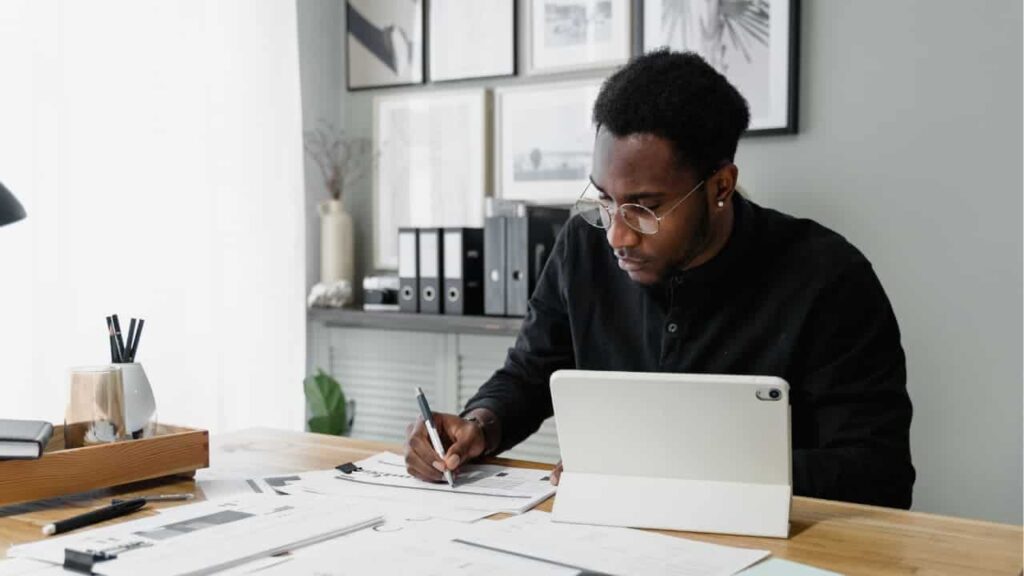
I’m missing the plot.
Indeed. That’s when I find that I’m off out of resonance. When things just don’t seem to be working, I can go back and do my little inventory and say I haven’t been meditating. I haven’t been consciously having contact with my higher power or the universe, or however you want to frame it. It’s a prescription for me. It’s just that sort of daily multivitamin that, again, you start to go; it’s just that simple thing. And it takes so little time. It just takes consciousness and awareness. And consistency. I’m so glad to have this. This is not the way I expected our podcast to begin, but I’m so grateful to connect on these things.
I said this before we started recording, but I allow the episode to unfold the way it’s meant to, and I trust that I’m going to be given the questions and the prompts and the kind of direction as it goes along. I just let go and let God love it.
Absolutely. It’s beautiful. And I really enjoy your other shows, too, by the way, having a chance to listen to some of your work. I’ve enjoyed your SEO work and the things I’ve read that you’ve written, but your interviews really hit home. So I’m grateful to be here.
Thank you so much. We were talking about James Guldan, an episode that you just recently listened to. Love that guy. Incredible story. And wow, what he went through and how he came out the other side. He almost didn’t. But of course, it’s all meant to be. And if you’re meant to stay on this planet, some miracle will happen so that you can make it truly and.
The greatest gifts of my life have been served unwrapped or wrapped in many cases, which would have probably caused most people to reject them.
To be an example for others. We’re all blessing each other in these ways: to give hope, to cast a little light, a little more light.
It’s funny that Joe Polish sometimes says, “Sometimes a person is in your life just to be a bad example.”
I’ve got a whole host of those. And those are gifts, too, man. In my history, those are some of the most potent gifts because I refer back to them often. Those are unforgettable.
And the funny thing is, if you look back at it fondly and know that this was just a complete setup for your highest and best good, then you can look at these folks who were villains in that part of your story and see them as the actor that’s behind the role and love that actor, love that soul, and still not necessarily condone the bad behavior, but still see the beauty and the grace of it all.
No doubt about it. It’s funny that you bring that up. I had a series of awakenings over the years, but about five and a half years ago, I quit drinking. I was experiencing this, and it was very necessary for lots of different reasons, not the least of which is that my family history is riddled with alcoholism. And it’s something I knew I needed to avoid. But it got its grip on me, and it took me a while to shake it. But in the end, the buoyancy that came from that friend who’s been through it said, “Ah, that’s a pink cloud that you’ll come back down to earth.” But I didn’t.
I maintained this incredible buoyancy as if I had survived a terminal illness. And I realized, in retrospect, I did. And then, somehow or another, I stumbled upon a story about someone who, in fact, had survived the terminal illness and then later had a near-death experience, died, flatlined, clinically dead for 15 minutes, and came back with this incredible story about flying through this valley on the wing of a butterfly and meeting a woman who introduced herself as his sister that he did not know he had, and then gave him all this wisdom about his history and his life and explained to him that there are no mistakes and that there are absolutely no sins, and that, in fact, you create this life in advance and you agree to these dynamics to teach you how to learn how to love and to overcome fear. And that hit me so hard.
Even telling it now gets me all misty-eyed. And I began going down this rabbit hole of near-death experience videos on YouTube. And it’s a guilty pleasure, but it’s illuminating. And if you want to have a religion, take the religion out of the religion.
Watch a hundred of those, and you will come up with an idea about the way the universe works, or at least the way our universe, this experience, works because the consistencies are remarkable. And I’ve read a number of books about this now. I look at everyone now with much more gratitude. They say, love your enemy. And that’s where that comes from because there are no enemies here. The perpetrator and the victim will trade roles at some point, probably and ultimately, so that we can learn love and forgiveness. And if that doesn’t make the world a better place, nothing will.
But that’s why we have so much pain and difficulty. At least, this is the explanation of these people who come back with these experiences: they are. This is intentionally hard. This is like a spiritual gym, and we need this contract.
School is Earth school.
Earth school—no doubt about it. I always had this innate feeling that no adversity should be wasted and that it’s the overcoming. Everybody loves that story. We watch movies about this. Everybody loves that second act, that person who maybe started off strong or maybe started off, and then they rise from the ashes, especially if they crash really hard. That’s always really inspiring because cleaning up the wreckage is a daunting prospect.
Focus on love and gratitude and overcoming fear.
But then to see someone rise again in a way where they’ve been pure, purified of sorts left, leaving behind the stuff that doesn’t matter and refocusing on the things that do service to others, contribute to the greater good, focus on love and gratitude and overcoming fear and those kinds of things. See, that’s also a very common dynamic with people who rise from the ashes. Because it is a purification, it’s almost alchemical.
It’s all spiritual refinement.
Indeed. And it’s heat and pressure. It’s the same way you harden. You take diamonds and turn, or take coal, turn them into diamonds, or the way you temper steel or glass. It’s always heat and pressure. And so we are physical matter here, to a degree, at least, the shell that we’re operating in. Why would we be an exception? Heat and pressure purify and refine us as well as strengthen us.
Yes. We’re forged in the crucible, no doubt.
No doubt. These allegories have truth on many levels.
Amazing. There’s a great book, a children’s book, that I don’t know if you’ve heard of before, but I think it’s pertinent to our conversation right now. And it’s called the The Little Soul in the Sun. I’ve recommended it before to my listeners, but I’m going to recommend it specifically to you, Jason, for your little ones and for you because I think it’ll really resonate. It was written by Neale Donald Walsh, who also wrote about Conversations with God.
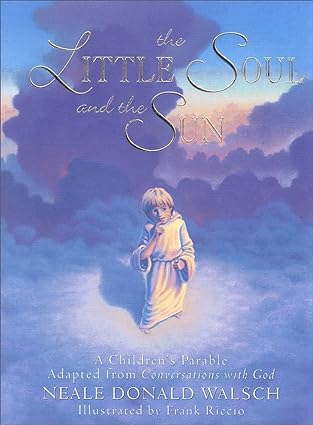
It’s just this beautiful allegory or story of how each of us comes into this incarnation in soul contracts, where we are agreeing to be the villain in somebody’s life and vice versa. And please don’t forget who I really am, because I will have forgotten.
And I’m doing you this favor so that you can learn how to be forgiving or unconditionally loving or whatever. The thing is that you want to really experience being. It’s easy to forgive somebody for accidentally bumping you in the grocery store, but it’s a lot harder for somebody if you’re betrayed or somebody embezzles you or assaults you to forgive them. People will. Souls will volunteer to do these terrible things to help us on our path to that spiritual refinement. It’s a really beautiful little children’s book, and it’s got such powerful lessons that correlate to, of course, the bigger book, the Conversations with God book.
I love that. I think about when children die at a young age, or there are some beautiful stories about people who got into a car accident and survived and their family died. They were driving, and they caused the accident. And they later have that experience. Wherever they’re told by their wife or children who died in the accident, they meet them during their brie, and they’re told.
I think I saw that.
One on the guy who flipped his car.
He was asleep, and he was looking, or maybe this was a different one, but this guy just looked at his phone for a short period of time. And then, when he looked up, head-on collision. And then he finds out, and of course, every one, his whole family dies, and he finds out in his and NDE that this was already written. This was a soul contract, all made before incarnating with all those family members that this is what’s going to happen.
Learn to love deeper through loss.
He’d asked for it so that he could learn to love deeper through loss. That’s both beautiful and daunting because you go, oh, I get it. I get why I’m here. But, shit, I really don’t want to do that.
Can I just have an easy life? I just want to skate through this one.
It also easy life. Easy decisions, hard life. Hard decisions, easy life. You look back, and I think that when we get to the other side of this, we’ll be giving to the ones who took the greatest risks in these regards. And you’ll say you lived a great life if you really threw yourself into it and you took those heavy weights, those heavy experiences, and you assimilated them and then turned them into beauty. Easier said than done.
That reminds me of Marianne Williamson and her amazing quote. Our deepest fear is not that we are inadequate. Our deepest fear is that we are more powerful beyond measure. It’s our light, not our darkness, that most frightens us. We ask ourselves, who am I to be brilliant, gorgeous, talented, fabulous? Actually, who are you not to be? You are a child of God. Your playing small does not serve the world.
And I just think this is what is really scary: to step into our greatness, not to be facing head-on a horrible, difficult challenge, seemingly horrible, but, of course, a blessing in disguise. But it’s that, “Oh, my goodness, who am I to be gorgeous, talented, fabulous, brilliant, a force for good in the world and someone that’s speaking on stages or getting interviewed on Good Morning America or whatever, who are you not to be?” Because that’s what you’re here for, is to be a light in this world.
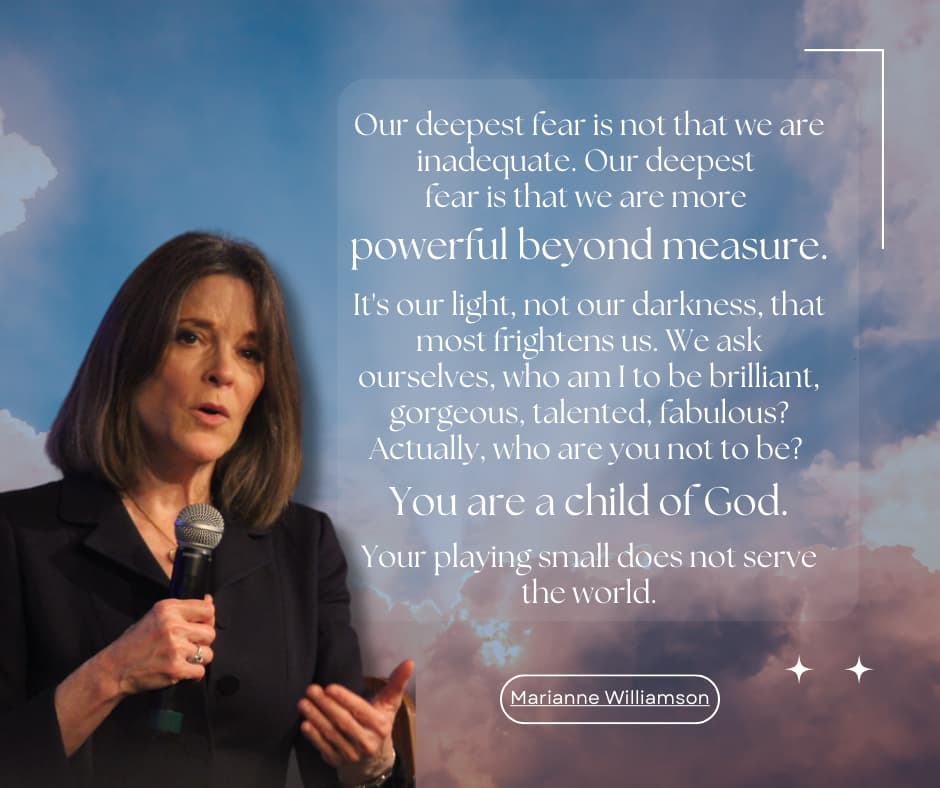
That’s right. That’s a scary prospect. It’s hard to put those things down. Tall poppy syndrome. There are so many things that appear to keep you from doing that. Why do you go back to revert to bad habits? Why do we find comfort in things that are actually really uncomfortable, addictions and things like that? Because sometimes the light is just too damn bright, and you turn away from it. And that’s one of the baffling things about bad habits and addictions. And by the way, I’ve learned from experience that everybody has something. It shows up with some people, alcohol, food, drugs, sex, whatever. But everybody has repetitive behavior or a repetitive thought process that causes them dismay and that they struggle with in their quietest moments.
I learned to develop a lot of compassion because I believe everybody’s suffering. That’s the human condition. I think that that’s what keeps us, that leads us away from the light. And then it’s our job to keep putting effort towards going back. And that’s the daily thing. It’s just like gravity. We have to stand up and work against something every day. Plants work against something every day. Gravity.
Leaning towards the light. The question is, do you give to the gravity, or do you lean to the light? And that’s the moment-to-moment, day-to-day, year-to-year practice that allows you to get stronger, just like that tree that grows on a cliffside. You take a seed, plant it in a pot of fertile soil, and grow that tree in a greenhouse. Perfect conditions, light, the right amount of nutrients, and you’ve just got all the humidity and the whole thing. And you just curate this experience, and it grows tall and spindly, and then you open up the window, and one wind comes through, and the thing falls down.
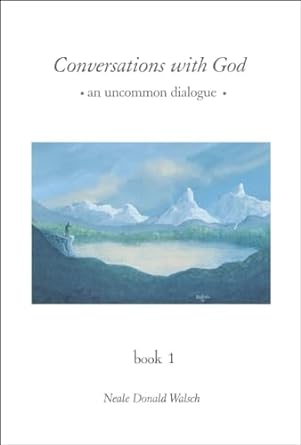
You take that same seed and the same DNA, and that grows on a cliffside where all these elements are just crashing against it. As you’d see, almost like a bonsai tree coming out of the mountain, or out of the side of the cliff, and you see that gnarly character come out of it, and it’s so strong and rugged, and it’s got this inherent beauty in it. That seed that was grown in a greenhouse just doesn’t have.
It has inherent beauty because of nature and its creation of the universe, but it doesn’t have that character that we all admire so much. And we see that in people, too. Why do we want to live more like that seed? And this is how we live now. Helicopter parenting, all this stuff, wrapping our kids in bubble wrap and wanting to protect them from all the adversity. I’d rather be that tree on the cliff. I certainly want my kids to be that tree on the cliff. I don’t want them to suffer unnecessarily, but I do want them to suffer, necessarily.
Reminds me of something I did a long time ago in New Zealand. It’s called a Zorb ball. Do you know what that is?
I love those things. They’re hilarious.
It’s this huge plastic ball that is transparent. You get inside, and you can either have some water in there, or it could be completely dry. If it’s dry, then you are bounced around and tumbled around like you’re in a washing machine or something. But if there’s some water in there and you have the bathing suit on, you’ll just slip through, and then they’ll push you down a hill. I don’t want to live my life where I’m inside a Zorb ball, and it’s all cushy and comfortable, and I’m not going to get scratched or bruised or anything. I want to live a full life and have been fully used up by the end of it, but I am still not in my shrink rack packaging at the end of it all.
That’s a wasted life. I agree.
Have you been in a Zorb ball before?
No, I haven’t, but I can’t wait to go down to New Zealand and Australia for lots of reasons. But that’s one of the main reasons, actually. I don’t know that they do that here. I have a feeling our insurance; I mean, we have a bubble wrap society here, so I’m not sure that that would fly here. However, it might be a good business opportunity. Maybe you and I should talk about that offline.
Let’s talk about some of your adversities. You are a graduate of the University of Adversity. You shared how powerful adversity is before we started recording, shaping and making you who you are, and you lost your mom. And I’ll let you share that story as much as you want to disclose about that. You experienced toxic mold exposure, Lyme disease, gut dysbiosis, and so forth. You had some real harrowing moments there that somehow you managed to get through and thrive despite, or maybe in part because of. And I’d love for you to share some of that.
Sure. I mean, in retrospect, I actually really think that it was all absolutely necessary. So I look at all his gifts at the moment. I said before it’s not so easy to have that perspective. Going back to when I was about four years old, I lost a lot of weight in a three-week period, and my parents were concerned, of course. They took me to the pediatrician, who said, “No, you need to take him to the children’s hospital; this looks serious.” I was having difficulty breathing, and I was having reactions to seemingly everything.
And so the initial diagnosis, based upon my family history, as well as the symptoms that I was presenting with, was cystic fibrosis, and that was a death sentence back then. My father was particularly hit by this. In fact, they were both very concerned because it was a genetic disease. On my father’s side, my father lost four of his cousins to CF before the age of 14, so they spent the next six weeks crying while they waited for a second opinion, which thankfully contradicted the first diagnosis. I actually had asthma compounded by pneumonia, and I was allergic to every single thing they tested me for. So they put you in a papoose, kind of like a straitjacket for toddlers, and with an exposed back. They showed this grid, and they applied the antigens on your back, but that’s how they look: a ladybug, just all over it.
Breathing isn’t just a physical act; it’s a metaphysical process. Share on XThat sounds like torture.
I had an itchy childhood. A lot of it showed up as dermal sensitivities. But I also had asthma, and I. I lived on inhalers, and they weren’t even really good inhalers back then. There was like a breathy. It was like a powder that you had to inhale. It was bizarre. And I grew up on this non-working farm.
It was basically an animal adoption facility. I was surrounded by all the things I was allergic to. Grass, wheat, corn, eggs, dogs, cats, cotton, soybeans, fields as far as you could see, and all these critters. And my parents had a really interesting idea about hygiene. I would actually call it Low Gene. There was very little care for these things. Our dogs and cats used the basement as a litter box half the time. They are very dysfunctional alcoholics, and both of them are alcoholics.
And that my family tree, the roots run deep into bourbon barrels, really. I essentially lived like that until I was about twelve, at which point my folks split up, which was a blessing for everyone. I moved out of that musty old farmhouse, and all of my symptoms went away. I never had to use an inhaler again. I am no longer allergic to anything. And so it was chalked up to what they call spontaneous adolescent remission, which is a fancy way of saying they don’t know what the hell happened. But my grandfather had grown out of his asthma, so they just said, well, just like that. I didn’t think about it again for over a decade.
But two years later, my mother committed suicide in that same house. She stayed behind. I moved in with my father. The book split up, which is actually relevant to the mold side of the story, which we can get into if we have time. And then, a year later, I was diagnosed with Lyme disease. Still don’t know if I really had it, actually. I had symptoms, but Lyme was very difficult to diagnose back then, and a lot of false negatives. There are a lot of false negatives, and there still are.
But the treatment for it was so heavy-handed because it was early, and my doctor was fairly experimental, and it was 30 pills a day for three days and then off. So it was pulse therapy, and it resulted in me being sick so much that between my mother’s death and Lyme, I ended up being effectively forced to drop out of school. Now, I wasn’t really a big fan of school anyway. I like to learn. I don’t like to be force-fed. It did not tickle my curiosity being there. The only regret that I have about not dropping out of school is that I didn’t do it earlier. But basically, they came to me and said, you’re going to have to stick around for the rest of the year and then come back again because you’ve missed so much school.
And I said, “Well, no, that’s not going to work. So I had my father sign me out, and to his credit, he said, so what do you? We’re walking out of the school.” And he said, “So what are you doing today?” I said, “I’m going home with you. And he goes, like hell. You are going to work. You’re a man now. So I walked to the gas station where I was working part-time, and I told the owner that I just dropped out and I needed full-time hours.
She said, well, great, I got another loser. And I was like, “Well, no, let me tell you the story.” I want to save money, get my GED, and start college a year early. And she embraced that, and I started full-time there. And within a few months, I met a guy who came in with a flat tire and his BMW. And it’s a story for the. It’s a fairy tale. But we struck up a conversation, and he ended up recruiting me to come work for him on Wall Street.
The impact of mold, mycotoxins, and VOCs in our indoor air is crucial for our health. We can address these issues without fear by educating ourselves and being proactive in creating clean and dry living environments. Share on XI was 16. I had nothing going. I mean, that story usually ends at the gas station, and it’s really where a big part of my story begins. So he recruited me, and I went into the train station right next to the gas station in my town. So, it was a commuter town. So, I ended up commuting with him. Within a year, I had gotten my Series Seven stockbroker license at the age of 17, which unknowingly made me the youngest licensed stockbroker in history. And so that’s amazing.
Total. I mean, accidentally,I was, like, the least likely to be a Wall Street whiz kid, but I ended up really taking to a well. It was interesting there on the commutes to the city, I would, because I had no money, I would eat a bagel or Danish, or these high-carb processed things, and I would have these out-of-body experiences, really brain fog, like, cubed. I would literally just feel like I was disconnected from my body, and it took me a while to figure it out, but it was because my gut had been so wiped out from the Lyme disease, from the treatment for Lyme disease, from the antibiotics, that I was effectively fermenting. I was probably like a distillery in my gut, just producing probably a lot of alcohols, quite frankly, VOCs, for sure, microbial VOCs.
When I kind of connected the dots on that, I started eliminating those foods, and suddenly, my brain came back, and I started experiencing. My skin got better, and my fatigue was nonexistent. I got this energy back, and I didn’t realize it at the time, but I had embraced the ketogenic diet, something that 30 years ago, very few people were talking about and even fewer were doing, except for epilepsy treatment, for example.
I mean, Doctor Atkins was talking about it, but he was talking about something that was a little bit cruder than what I was doing. That got me to the place where I could actually be really effective on Wall Street. And as a stockbroker making 400 phone calls a day and looking for one guy to say, yes, that was the key to success. Failing 99 and three-quarters percent of the time was the key to success. And so it was real, true persistence training. I did that for nine years. I ended up owning my own firm for two years at the end. Then the.com bubble burst, and I became really disenchanted with what I was doing. I felt like it was an asset class that I didn’t really believe in for the time being.
And so I decided to go on a walkabout. Meanwhile, my drinking had accelerated quite a bit because, on Wall Street, you went to Rome and did what the Romans did. So work hard, play hard was the motto there. So I went on a walkabout, and while I was away, I was reading a story about a man who had developed adult-onset asthma and allergies to all these things that he never had a problem with before. And suddenly, I had this deja vu moment. I’m like a time machine. I’m back to my childhood and thinking, geez, I wonder if we had a mold problem at Old Trenton Road. So I called my dad from a pay phone and asked him, I said, do you think he had molds? And he’s like, “Of course. We had mushrooms in the basement.”
Why do you ask? And I thought like seventies parents. They’re like, “Ah, you don’t need seatbelts.” It was just a very different mentality. I said, “Do you think that’s what made me sick?” And he goes, “It couldn’t have helped.” That was all I needed to hear. I became fascinated, captivated, obsessed, even really, with the idea that the buildings we live and work in can make you sick. That was a new concept for me, and it is a new concept for many people, although fewer and fewer. Thankfully, this awareness has really gained some momentum in the last 20 years. That was 21 years ago, by the way.
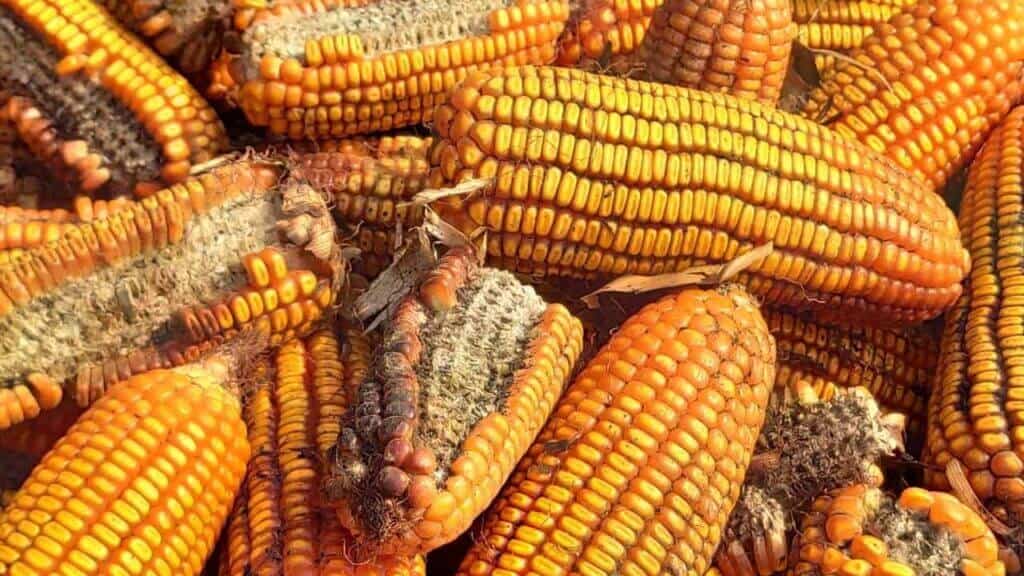
I got into this space back when it was very decent, and I ended up on the remediation side to earn a little while. I learned how to do sales for a large remediation company. I ended up hearing about a guy who trained mole-sniffing dogs to find hidden mold in buildings. And I thought, wow, that’s just crazy enough to be brilliant. So, let me check this out. Went down to Florida, met the guy, and met the dog. I came back with the dog. I was not expecting that. My family thought I was crazy.
Here, the youngest licensed broker in history has a mole-sniffing dog. They thought I was.
You came back with the dog.
I came back with a $14,300 lightly used dog. The only used dogs that were on doggy death row. And mine had gone to doggy death row twice because she really needed a job to stay out of trouble. So he put her to work. So I came back with a mold-sniffing dog, and we hit the ground running. We got some really early. We actually had Channel Six Actor News tried to debunk us, so they sent a consumer alert division out, and they hid mold in the house. And instead of debunking us, we found the mold in, like, three minutes. And so they endorsed us.
And I didn’t even have an LLC set up. I had; it was just like this avalanche suddenly came with local doctors, problem patients, and all these people. And so the stories of healing are what led to the Good Morning America episodes and all the press. I’ve got boxes and boxes of books and magazines. We never had to pay for any advertising. We called the company lab results because we did laboratory testing and we used laboratory retrievers. And that was cute.
That is cute.
Every challenging experience is an opportunity to find strength and resilience. Share on XI did that with Oreo. I did that for about 15 years. That company became 1800, got mold. And so, through that, we were able to help many thousands of people. And then, in recent years, I became very, again, another sense of disenchantment, sort of like the death and rebirth process. I became very disenchanted with the idea that I was primarily serving the affluent, and I was also facing the fact that my drinking had gotten bad on Wall Street and was actually getting worse, and I gained a lot of weight.
Here, I’m selling health and helping people with health, and I’m not living that. I am actually living a double life, talking about how they can do things to improve their quality of life and then drinking daily to excess. And there was a cycle that was clearly going nowhere fast. So, I ended up deciding to make a whole bunch of changes. And so one of the things was to really focus on creating equity in this indoor quality space. And so, I decided that we needed to find a way to make high-quality data accessible to everyone. So it led me on a mission to create a high-quality do-it-yourself home test kit so that I wouldn’t just be serving the affluent; I was making rich people healthier. But many people, we had to turn away.
I mean, we had to turn away 80% of the people who called us for our inspection business because they were either outside of our coverage area or they couldn’t afford a simple inspection. And that broke my heart. My own parents could not afford to hire my company. And so here I am, creating a company to help families navigate something that we went through. And yet, I was actually truly making a business that was benefiting me and the affluent people who could. So that was talking about integrity. When we began this conversation, it was not full circle. It did not resonate.
It was deeply disconcerting to me when I was able to get quiet and getting. And finally, I was able to get sober. It took a long time. It was a very, very difficult process for me. It was not an easy decision. It was an easy decision. It was a difficult process because I had a physical codependency at that point.
What was the breaking point or the pivot?
Full surrender. When I could finally admit to myself that I was an alcoholic, that I could not drink safely ever, and I had always let myself have an outlandish, well, maybe one day I was also facing the fact I nearly lost Sarah, who’s my heart. So it was just this amazing sort of grace of the universe, really. And I was also resistant to praying. In the spiritual conversation we had in the beginning, I had inklings of those things, but I never really landed squarely in that kind of dialogue, internal dialogue, or even external dialogue. And so I became more open to these things. I think it was truly the surrender. And then a miracle about it is that I truly one day woke up and was free.
And also it was also getting involved in the fellowship of the twelve-step program. That was also powerful because I was able to find real hope. I was able to contribute to other people’s hope because they would see me coming in, seeing me struggling, and then seeing me slowly getting it together. And that became an example for other people who were suffering similarly. That community was the key, actually. I really think that it was a combination of true surrender and community. So what happened there was, from that point on, I started really thinking about words like integrity. What does that mean? That’s in the literature. I was raised by a wordsmith.
My dad owned the local newspaper. And so we do puns at the dinner table. And whoever finished the double, triple, or quadruple entendre was the one who won. And these would go on for weeks and months, sometimes even years. We’d do this at holiday parties and stuff over dinner, and someone would bring it back around. Looking at words and then looking at their definitions and what they really mean got me to the point where integrity became. Becoming paramount and being integrated. I was struggling with this idea of how to maximize our purpose and maximize our impact with what I’ve learned through doing assessments for 15 or 16 years.
That’s what led me to be able to create the GOT MOLD?® Test Kit, which we launched on gotmold.com. It took me five years to get the partnerships together and to get myself together and everything else we launched about a year and a half ago. It was a huge endeavor for me. Got me outside of my comfort zone every single way. But what also happened was I got sober on April 13, 2018, and Sarah and I never really planned to have kids. But suddenly Sarah was pregnant a month later. And I have two little boys. One’s two and a half, and one’s four and a half.
They’re my sober babies. The universe gave me these incredible reinforcement tools and gave me the ability to break a cycle that’s generational for me.
To heal generations, to bring in ancestral healing, because you’re willing and able to break the cycle.
No doubt about it. I really look at this as those were the gifts that were given to me to overcome the boulders being rolled down the hill, the obstacle course laid out in front of me that I believe I designed. So now, with the test kit, we’re able to help people who can’t afford professional testing, and it’s remarkable. And I’m able to be present with my kids and operate from a place of true integrity. And I sometimes look back and don’t even recognize my previous life. It was a true sort of death and rebirth. It is almost impossible for me to sort of relate to that. And I have to do that daily.
I have to remember that it was just six years ago. And I have pictures, actually, that are amazing from a wedding where I was the best man seven years ago. And, boy, I looked like the stay puff marshmallow man. And I remember feeling so insecure. What I realized was that. That deep insecurity, that imposter syndrome. Even though I’ve had a few accomplishments in my life, I always felt like someone was going to find me out. And I realized afterward that what they were going to find out was that I was an addict and that I was hiding a really big part of my.
The most important thing for me was hiding from everyone who wasn’t also an addict because those were my friends. And the other thing that’s been really helpful is actually finding out that an incredible network of friends who have either been through it or understand what’s going on. So now it’s just that life has blossomed in the most miraculous ways on the heels of those sort of concentric circles that came from these awakenings. It’s pretty hard to be sitting in this seat right now and not be outrageously grateful. It’s been a fascinating road, and I’m 47 now. I feel like I’ve already lived this amazing life, and I just can’t wait to see what happens next.
You’re only getting warmed up.
Just getting warmed up and more useful by the day. And I think that’s the key. How can I contribute to the greater good? The more in tune I am, the more my contributions become a natural byproduct of just moving through the world.
How did you get to a place of peace about your mom committing suicide?
Well, actually, funny enough, when I was. At the time, I was; I told you I was a recalcitrant teenager. I was also very experimental. At the time, I was experimenting with psychedelics quite a bit, and boy, that’s in vogue now. But back then, risked everything to explore consciousness, not knowing quite what I was doing. Lsd and a lot of psilocybin mushrooms were the dominant medium. And at the time, I quickly saw that she. Because I was experiencing this, seeing the glory of the magic of the universe and the mind. I had a really challenging childhood, and I was actually pretty depressed as a kid.
I was, like, one step away from the trench coat mafia. I was a very unhappy teenager. But when she died, within two weeks, I had the whole thing sorted out. And it was because I had seen that she had lost perspective. She couldn’t see past the tip of her nose, and she didn’t have the ability to zoom out and see the magic that happened. I don’t care if you look telescopically or microscopically. This is a beautiful experience. And we are stuck in this weird perspective that this magnification shit sucks.
Believing is seeing, not the other way around.
But like every other magnification, it’s beautiful to the most mind-blowing degree. I don’t care what tool you’re using. Microscopes are tall. It’s immense, intricate, indescribable beauty. I had this realization that the beauty of what we’re seeing here, we’re blinded to the beauty. I needed to embrace that. And that began the wheels in motion on understanding alchemy, if you will, turning lead into gold. And this idea that maybe that’s the whole reason is to be able to shift perspectives and to be able to see what isn’t necessarily visible to the naked eye, which is what LSD showed me, by the way, to see that.
Wow. If your senses shift, your reality shifts, at least in the moment. And so what is reality, right? And then how elastic is this stuff?
Believing is seeing, not the other way around.
Absolutely. That gift of having been in the midst of a sort of adolescent drug experimentation turns out to be a pathway to healing. We know that now. If you told somebody that, then they would have said, “Ah, whatever, pipe dreams. And now we know that these things resolve very quickly if you submit yourself, if you surrender, to an experience along those lines. So that was a big part of it. And as a result, I went from being a depressed teenager before she died to actually being. Becoming an incurable optimist within weeks. It was a true shift.
And I now say my mom’s sisters have a really hard time when I say this because they have not reconciled the way I have. But I often say that my mom’s greatest gift to me was her suicide, and I thank her for it every day. Not to say that I wouldn’t wish her back for a hug, but I wouldn’t want to rewrite a single moment of my history. What she did was she gave me gifts in so many ways. Her alcoholism, her suicide, and her work ethic are many great examples of who she was in the world and her contribution to the greater good. As a nurse, she ran a rehabilitation center for people with brain injuries and trauma. And she was a force. She was the most well-respected person in that building, and she gave herself to a fault.
So I have gratitude for every aspect of what she brought to this world, but I wouldn’t have had that view if she were still. If she were still here today, we’d probably be fighting. But because of that, she changed my world in a way where love is the dominant force, and forgiveness is the operative mechanism to get there.
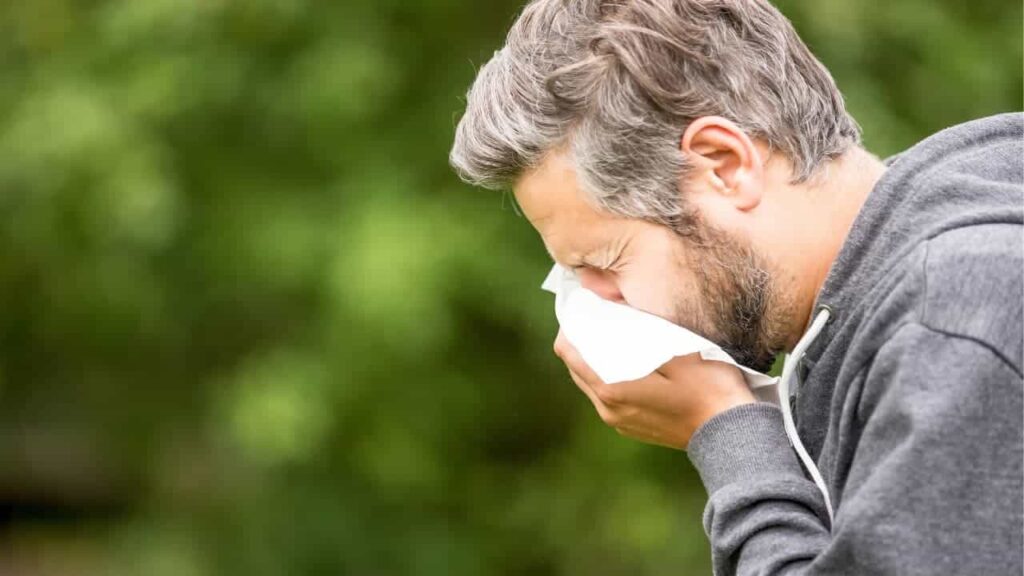
That reminds me of that conversation we were having earlier in this interview about the person having a near-death experience who, moments before, is looking at his phone while driving, and then next thing his family has passed, unfortunately, or just the way it is, but it was already written, and he gets to glimpse that this is a much bigger picture than he could possibly have imagined. It’s all miraculous. It’s all miraculous. I’m curious to hear your thoughts on how the toxic mold exposure contributed to her mental health and her choice of suicide.
That’s actually a really important part of the work that I do now, which is raising awareness around mold and debunking a lot of the myths around it because most people think about mold and toxic mold as these few molds, the toxic molds at the exclusion of the other molds that don’t produce these chemicals known as mycotoxins, which are these very potent poisons that are used to inhibit the growth of other microorganisms, bacteria and fungi. These are chemical weapons that are used at a microscopic level, and we get caught in the crosshairs. But there’s a misunderstanding around this. People think that mycotoxins become easily airborne, and actually, they really, truly don’t, except on carrier particles like spores and things like that. I noticed in my early days that there were people getting sick in buildings where there were normal spore counts and where there were no. None of the toxogenic species are present. And so I thought, what is going on here? Well, they all had a musty smell, all those buildings. They had what they call microbial VOCs.
VOCs are often man-made chemicals, and our buildings are loaded with them. They’re on other conversations for a longer podcast, perhaps.
VOC stands for volatile organic compounds.
Volatile organic compounds are chemicals that are liquid and evaporate at room temperature. So they’re liquid, and that’s why we keep a cap on them. Alcohol is the most famous and popular one. However, bleach, or the active ingredient bleach, is also a VOC, sodium hypochlorite, benzene toluene, and industrial solvent. These are very noxious.
Brain fog and cognitive impairment are closely related to VOC exposure.
Many of them are carcinogens. Almost all of them cause brain fog, emotional dysregulation, and cancers, of course. But brain fog and cognitive impairment are closely related to VOC exposure, especially if you ever paint a house; if you’ve ever painted with VOC-based paints and been in that room long enough, you get pretty loopy. And so microbes produce these too. In fact, many of the man-made VOCs are actually also produced by microbes. Mold growth is a chemical factory, and our buildings are super tight these days, so they build up; we keep them tight for energy efficiency, but what we end up doing is creating these incubate, these chemical boxes, these hyper-concentrated chemical boxes. So the first thing that happened was the dogs were trained to sniff out the hidden mold in buildings, and they were trained to sniff out the source of those VOCs. So we were finding hidden mold that people weren’t able to find.
And so when we got rid of that, the musty smell went away, and people got better.This is a big deal. Spore counts are normal. There’s no visible mold. We find the musty smell there; they’re sick. We got rid of the mold, and everything still tests well. The air count and the sport counts are normal. There’s no visible mold.
There’s no moisture problem. People get better. It’s not the toxic, it’s not the mycotoxins, it’s not this specific species. Then, in 2008, a study came out by Brown University with 6000 participants, a really big study, and they interviewed people and asked them if they had a known mold or moisture problem in their building. And then they asked them how they felt. Basically, it is a quality-of-life survey. What they found was a very strong correlation between mold and dampness indoors and depression. That was fascinating to me.
Of course, I hit home, and I thought, wow, I wonder what’s really going on there? And, of course, fatigue, difficulty concentrating, and the inability to. That’s depressing. However, what they said at the end of the study was that they weren’t sure whether or not there was a chemical relationship between mold and dampness and depression or whether it was circumstantial. People who are saying, “I’ve got a mold problem, I haven’t been able to fix it, I can’t afford it. My husband or wife doesn’t want to listen to me. My landlord won’t do anything.” That’s a disempowering situation. And if you’re disempowered for a long time, that’s depressing. There are big question marks on that. Well, I became very good friends with a woman named Dr. Joan Bennett at Rutgers University. She actually studies. She’s a fungal geneticist. She called one day after seeing an article about Oreo, my dog, and me, and she said, “You have a really remarkable dog. I studied mold. I’d like to meet your dog.
All mold growth indoors has the potential to lead to toxicity.
It’s okay if you come, too. We hopped in the van and drove up to Rutgers University, just a couple exits up from Princeton, where we lived at the time, and did a demonstration for her. And then she showed me her studies and told me her story. She actually had a house in New Orleans, which got flooded during Hurricane Katrina. And being a good scientist, she decided to go down and check it out. She was also a mycotoxin expert; she knew that it was hard to breathe in the amount of mycotoxins that cause the kind of disease that most people attribute to. But she went in protecting herself with an N95 respirator, which COVID-19 taught us only takes out particles. She could smell the musty smell coming through, and it was very, very strong for her.
She had to take a few breaks. She was feeling ill. And that really made her wonder what was going on because here she was, protecting herself from what she thought was a potential source of illness. She went back to her lab and started looking up the musty smell and found that there were very few meaningful studies on this, especially when it comes to basic science and how it impacts metabolism and things like that. She did this experiment using special fruit flies that actually fluoresce when they produce dopamine. It’s amazing what you can buy online. Then, I began testing them with these compounds that comprise the musty odor. One, in particular, she isolated, called one octane thiol, which is mushroom alcohol that has a very distinctive musty smell. So she studied with plants and also studied with these fruit flies.
And she found that the fruit flies stop producing dopamine. They stop reproducing. They start flying down instead of to light, which is their instinctive nature. They develop locomotive disorder. And what she characterizes Parkinsonian-like symptoms. Later on, subsequent studies done with her students found mitochondrial damage. She decided that these are neurotoxic compounds and that they should actually be called volatoxins instead of microbial VOCs or VOCs. You think if an animal stops producing dopamine and stops reproducing, it’s pretty depressed.
In retrospect, now it all made sense. You know, she was also an alcoholic, and mental illness is complex, and nobody really knows which comes first or how that all unfolds, but it certainly could not have helped. I feel that it accelerated her demise. But it also gave me another gift, which is this awareness about this particular issue, which is hiding in plain sight. I often tell people, don’t worry about the mold species. You have. All mold growth indoors has the potential to lead to toxicity. And if you see something, smell something, or feel something, do something. We sell a test kit; don’t worry about the test results.
Your breath is the key to life.
You have to learn to follow your intuition, you have to learn to listen to your body, and you have to be willing to dig deeper than just a quick test, even our test. You have to be willing to go the distance and get familiar with your building because it’s an extension of your immune system. The buildings we live and work in are like an exoskin or an exoskeleton, and we’re like hermit crabs in the sense that we don’t do very well without our shells.
But we also are locked up in these buildings, especially post-COVID-19, in such a way that we breathe 20,000 times a day, 13 to 15 times a minute, and it comes out to 20,000 times a day. You have to look at that as a dose, and you’re taking 20,000 doses of something every single day, and it better be healthy and nutritious, and error in our buildings is not. We went from building the last brick and stone and inert building materials that do not support fungal growth to building out of paper mache, which gets moldy very quickly, and then lining our buildings with VOC-based chemicals that are carcinogenic. And then we wonder why we’ve got skyrocketing rates of asthma, allergies, autoimmune diseases, autism, and things like that. And then we don’t even leave the house anymore.
We don’t even let nature in. We hypersensitize things, too. We’re not even exposed to a biological organism that would train our immune system to respond to these things in a rational way. It’s a perfect storm, really. But the key epiphany here is that it’s not just spores, it’s not just toxins, mycotoxins, and it’s not just the species of mold. It’s a broader conversation about dampness in buildings, chemicals in buildings, and the ability for us to stop hyper-sanitizing and let nature back in. If I could distill my 21 years, that’s it. Clean your house; keep it clean and dry.

HEPA filters and all that stuff is good. Open your windows and stop bringing the chemicals in. And then be vigilant when you see something, smell something, feel something, do something, and that’s it in a nutshell, really. And easier said than done. That’s why professionals exist. But your breath is the key to life. Manda breath is synonymous with life force or spirit in so many ancient languages. And yet, the air we breathe is often an afterthought.
One thing that we stopped doing and need to relearn is to breathe in the prana into our crown chakra because now we breathe it in through our nostrils. The primal life force, the prana, is breathed in through our nostrils along with oxygen, whereas we need to be conscious enough to choose to breathe in that prana, life force, and energy through our crown chakra.
I can feel that, actually, as you say, but I would also say that on a physical basis, metaphysical breathing through your nose is key. The mouth-taping thing is I do it every day. That stuff is. That’s super important. Changed my life. James Nestor‘s book Breath constantly because it’s incredibly powerful. And I encourage anyone who’s curious about this subject to read that as a launching pad to bring your awareness back to this vital.
Listen, breath is the first thing you do when you’re born. It’s the last thing you do when you die. I mean, does that not tell you everything you need to know? The word spirit comes from the spear. We respire throughout the day, and when we exhale for the last time, we expire. Right again. Words, right? Integrity. Sphere, spirit.
These things all have deeper definitions.
Beautiful. I was just talking with James Nestor. I was at the Genius Network annual event four days ago and had a really good conversation with him. He’s a very interesting guy. He spoke at the event and had some great tips. Highly recommend his book. And one last thing before we close out this episode: I’m curious to hear your take on the MOLDY movie from Dave Asprey because it sounds to me like what you’re talking about goes really far above and beyond what was in the Moldy movie. And those distinctions are critical for people to understand the VOCs and not being about just the mycotoxins.
Listen, I love Dave. We go way back, and I know you have a long-term relationship with Dave, too. He brought a lot of awareness around mold and food, which, by the way, is a really important part of the conversation that we probably don’t have time to go into. But most of the mycotoxin exposure actually comes from food. Peanuts, coffee. All grains, including every import, 60% to 80% of imported grains are contaminated with mycotoxins, according to a major study in 2018, a relatively recent study. And we’ve globalized our food so that you can’t expect us to begin. Mold grows within 24 to 40 hours of a moisture problem.
You’re talking about food coming over in shipping containers, unconditioned shipping containers. Give me a break. It’s a recipe for food-related illness, and it’s hiding because you can’t see this stuff. And it’s very hard to test for. And it’s very expensive to test. It’s a major scourge in our society. But the thing is, Dave brought a lot of awareness to it through molding. But he also felt a lot of fear involved in that movie.
And I think that if you want to detox from mold, the first thing you have to do is stop being afraid of it because it’s a normal part of our planet. Mold spores are in every breath you take, whether you have a mold problem in your house or not. It’s the mold growth in your building, the causes, the chemicals, not the mold spores that are present. Because the kingdom of fungi produces 50 megatons of spores every year, which is the equivalent of 500,000 blue whales, it’s 25 times as much tea is produced and drank every single year. Most of it lands on mountaintops in the oceans. But we are awash in spores; let’s not be afraid of mold. I’ve never seen anybody get better when they’re afraid of the mold.
If you want to detox from mold, the first thing you have to do is stop being afraid of it because it’s a normal part of our planet.
The body does not heal in fear. That’s first. The other thing is that Dave’s movie, I think, came out before a lot of these sorts of awarenesses were readily available before the research was there. However, it leaves out the important relationship between VOCs and man-made VOCs because VOC exposure actually creates mold sensitivities. Because of the VOCs, molds produced and then also mold, chronic mold exposure actually creates; I’ve seen this hundreds and hundreds of times. It creates chemical sensitivities, fragrances, and things like that. People can’t be in grocery stores and stuff if they’ve had a chronic mold problem because the immune system associates these so closely, and it goes bad news. Your sinuses close down, you have sinusitis, your throat closes up, and you have asthma.
So it’s not just mold, mold, toxins, or just VOCs. It’s a Venn diagram. I think that that movie served a purpose. It also focuses too much on mycotoxins and the exclusion of these other things. I would love to see that get redone. We’re actually looking to do a documentary, so we’re looking for a documentary team. If anybody is listening here, you can.
Watch out and introduce you to some people.
We want to open up a broader conversation. It may have to be a docu-series because, if you didn’t notice, I could talk a little bit, but I think that this probably eclipses food in terms of the cause of chronic illness. It’s been long said that food causes most chronic illnesses. I firmly believe that it’s air, food, and attitude. Air, food, and attitude. But air is much higher because you’re exposed to air. I mean, 30 pounds of air a day, you breathe 30 pounds of air, get your mind around that. 20,000 breaths.
Is 2000 gallons enough to fill a swimming pool? It’s huge. And so this is your single largest environmental exposure by orders of magnitude. And yet, it’s an afterthought amongst the four basic human needs. Air, water, food, shelter. Everyone thinks about food, water, and shelter. Air is only something you think about if you don’t have enough of it or it tastes better or smells bad. So, this conversation needs to be unpacked and then delivered in a way that’s friendly to the consumer, which is my mission. I think Dave did some good work there, but I think it’s a stepping stone.
I look forward to seeing your docuseries.
Let’s have a conversation on that offline here.
All right. I know that our listener is probably intrigued to get your test kit to test for those VOCs and not just the mycotoxins. If our listener wants to purchase your kit, where do they go? What’s the code? They can get a special discount, etc.
We made a special welcome page for your listeners at gotmold.com/getyourselfoptimized. When you go there, you will see that there is a link to the podcast as well as a coupon code for you to save a 10% coupon code: optimize10. We’ll get you 10% off all kits.
Then there’s also a link to an e-book that we produce, which is about 46 pages of inspection checklists and FAQs. It’s totally free, no strings attached. We get a ton of really great feedback about this. It’s especially useful for people who are early on in their mold awareness journey. If you just use this as the guidebook to sort of give yourself and your home an inspection, you will learn things about your home that you never knew.
And that’s the key. You have to get to know your building. It is not just a static box that you live in, work in, and store your stuff in. It is an important part of your immune system. You can also sign up for our newsletter if you want. And then anytime anybody has any questions, go to our homepage. There’s a contact bill at the bottom that asks us questions. You can also ask anything you want on Instagram.
I love to have those things answered publicly for other people’s benefit. I don’t answer all of those, but I see them all, and we’re really good at answering them. So yes, thank you for asking that. We’re here to help.
I believe that—I really do. I feel your energy of service to others and wanting to reveal light in the world. It’s beautiful. And you, too, listener, are a beautiful source of light in the world. So go out there and shine your light, and we’ll catch you in the next episode. I’m your host, Stephan Spencer, signing off.
Important Links
Connect with Jason Earle
Books
Film
People
Previous Get Yourself Optimized Episodes
Previous Marketing Speak Episode

